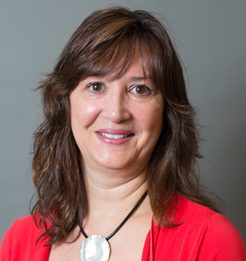For teachers who are waking up to the truths of Canada’s colonial past, the stories that surround the residential school era are deeply disturbing and revealing of Canada’s colonial past. Collectively, we are reeling from the horrors of the mistreatment of innocent children and, for some, we are wondering what form of hatred fuelled this type of abuse. The growing number of children’s remains found on residential school grounds is both heartbreaking and further evidence of colonial truths that can no longer be ignored. For those of us who have dedicated our lives to teaching, the idea that children were so maltreated in schools, to the point of death, is repugnant. And so, we pledge to one another, we want to be better and to do better.
We should also be aware that the learning of difficult truths has only started. We have only to look back over time to realize that the slate of colonial injustices extends far beyond residential schools. For instance, many of us have taught celebratory accounts of how the rich resources of the New World — including fish, furs and other staples —were taken and sold at great profit to overseas buyers. Yet how many of us have taught this lesson asking, at whose expense were these great profits made?
If we have listened carefully, we have learned how early explorers took Indigenous people overseas, without permission, to satisfy the curiosity of royal audiences and how Indigenous lives were cut short and family members devastated because of this action. What lessons might teachers have shared about this act?
Others may have learned alarming statistics showing how newcomers introduced diseases that invaded the homes and communities of First Peoples across Turtle Island, taking loved ones, both young and old, in the early days of contact. As teachers, how might we explore the topic of infectious diseases and the impact they have had on certain populations? How might we make that learning relevant and meaningful in today’s world?
In this time of truth and reconciliation, we are learning the devastating impact of outside religious and patriarchal structures imposed on First Peoples and how these insidious forces continue to play havoc today. We are further reminded by the Pope’s recent visit that the theft of lands from First Peoples took place through the so-called Doctrine of Discovery. What do students need to know in order to critically analyze what is often set out as fact?
We know the treaty system and the scrip system further justified the taking of lands from the original occupants, but do we consider whose worldview is being privileged in this system?
These truths, these injustices, are many — far too many to list here — but what educators are becoming increasingly aware of is the fact that these previously hidden truths have had dire consequences for the First Peoples across Turtle Island.
So, how can we as teachers best share these hard truths? There is no easy answer to this question. Teaching these truths is challenging for all teachers, whether non-Indigenous or Indigenous. It can make you question your own worldviews and raise complex, unsettling questions about your very identity.
My Indigenous colleagues and I often share these truths from our own perspectives, from our lived experiences, as a way to bring others into the fold of understanding.
For instance, as a Métis educator, I have ancestors who are implicated in the profiteering venture that was the fur trade and, at the same time, were labelled “dirty half-breeds” by the racist powerholders of the times.
Knowing that the treaty and scrip-making process sanctioned the takeover of lands from the First Peoples and made possible a new nation called Canada, I question why a corporate entity like the HBC (a place where I am loath to shop but still do) would have had any rights to our ancestral homelands.
I talk about the role of my great-great-grandfather, Pierre Poitras, in the 1869 provisional government and wonder if his standing as a Métis lawyer in the legal petitioning to join the newly formed Dominion of Canada had any role in why he was “brutalized” by the colonial forces?
For all teachers, whether Indigenous or non-Indigenous, the best we can do is to keep learning and model lifelong learning for our students. We can also hope that what we share may be helpful or resonate with others.
As an Indigenous educator, I know my ancestors are watching me, so I will always be asking questions and seeking answers. I encourage all teachers to do the same.

Special to the ATA News
An associate professor at the Werklund School of Education at the University of Calgary, Dr. Yvonne Poitras Pratt is a Métis scholar whose family ancestry traces to the historic Red River Settlement and, more recently, to the Fishing Lake Métis Settlement in northeastern Alberta.